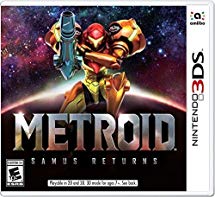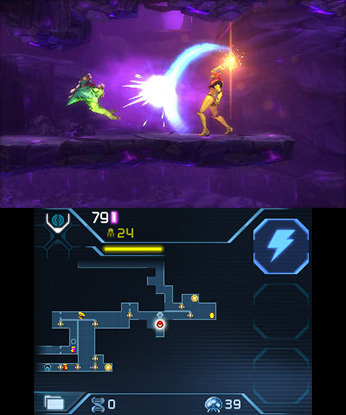Metroid II is one of the most memorable titles for me on the Gameboy. The game play, aesthetic, and soundtrack are really good and create an immersive experience.
I remember being sucked into the alien world. The sounds and environment were strange and mysterious.
One memory that sticks with me is after defeating a metroid, sometimes the soundtrack/sound effects would change, giving the impression that my actions had somehow changed something, and adding to the suspense of what would happen next.
In all, this was a game that fully immersed me, encouraging me to explore and take my time, instead of trying to just get through each level. Investing the effort to solve puzzles was well worth it and gave a bit of an edge against the next baddie.

In 2017 Metroid: Samus Returns was released. This is a remake of Metroid II that sticks to the core of what made the classic, while bringing it up to modern times with some quality of life improvements and additional changes. It’s different, yet unmistakably Samus Returns.
Gameplay
One major change is the 360 rotation of her arm cannon –she is no longer limited to four positions. This took some getting used to, but a welcome improvement. It also added a different challenge to the battle against some boss fights where the position and angle of fire mattered.
Throughout the game, Samus obtains most if not all of her original weapon and defense abilities.
Some additions include; a grapple beam to either destroy or move marked blocks by pulling on them, and a counter attack that will make some baddies much easier to kill. Both the grapple beam and counter play into boss-fight mechanics to cause extra damage.
Environment
Environment and aesthetic were also different. Developers had more system resources to work with, allowing the developers to give the world color, texture, and depth.
For me, this was a big change to the environment. In the original for Game Boy, the terrain was cold and lifeless, made of stones, rock, and inhabited by the hostile life forms that inhabited it. In the remake, the environment is softer and more familiar (to Earth). In addition, there are creatures and machines the background that aren’t an immediate threat, giving the world depth.
I think this change is an improvement over all and it helps the remake stand apart from the original.
Music was another defining element in Metroid II for me. In the remake, a lot of the memorable tunes are brought back with different instruments from the original. The sound effects have also been modernized.
The absence of the other-worldly sound from the original is missed, but it was an appropriate update. Using the instruments form the original would not have fit into the new atheistic and would have felt out of place.
Developers
Mercury Steam developed the game with Nintendo overseeing the work.
There are several developers that have either been with the Metroid series from the beginning or have worked on several games. Their passion for the title is a bit inspiring and appreciated.
The remake was produced by Hoshio Sakamoto. What’s interesting is he has directed all Metroids with the exception of Metroid II: Return of Samus (the original).
Takehiko Hosokawa directed and Kenji Yamamoto directed the music. They both have worked on several other Metroid games.
Conclusion
There’s a lot more I could say about this game, but I’ll need to keep it to this.
In all, playing through the game was a pleasure. It felt like there was a nice mix of nostalgic elements and new mechanics that made it feel like a new game.
It has kept important elements that make me want to come back to it and explore again.

